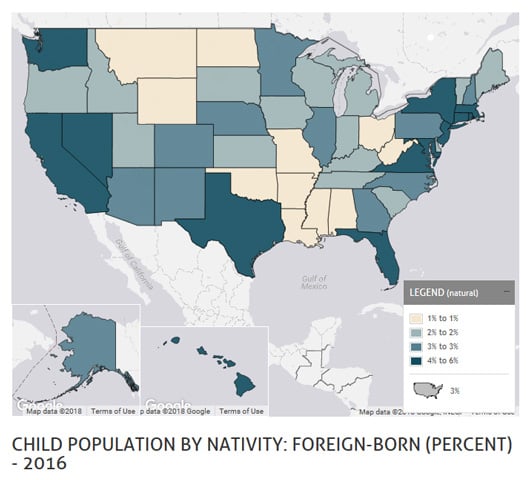The Number of Bilingual Kids in America Continues to Rise

In 2016, 22% of children in the United States — slightly more than 12 million kids total — spoke a language other than English at home. This rate has risen 2%, by 1.2 million kids, in the last decade. At the state level, the percentage of kids who do not speak English at home varies widely, from a high of 44% in California to a low of 2% in West Virginia.
In the last decade, the largest jumps in this statistic have occurred in the District of Columbia (up 6% to 19% of all kids); Maryland (up 5% to 19% of all kids); and New Jersey (up 5% to 30% of all kids). Beyond English, Spanish is the most common language spoken at home.
Among non-English speaking households, 4% of children in America — or 2.4 million kids total — have difficulty speaking the nation’s primary language. Learning English is important because it enables children to fully participate in school and American society, according to experts. At the same time, studies suggest that there are clear benefits to ensuring that a child’s first language is maintained. Speaking two or more languages is associated with increased abilities to concentrate, solve problems and focus. Being multilingual is also associated with better mental flexibility, increased cultural competence, stronger connections to place and family, and greater access to higher-paying jobs.
In 2016, 3% of children in America — 2.5 million kids total — were foreign-born, a classification category that includes both children who are U.S. citizens by naturalization and children who are not citizens of the United States. This rate has remained unchanged over the past five years.
Access demographic data on the KIDS COUNT Data Center:







